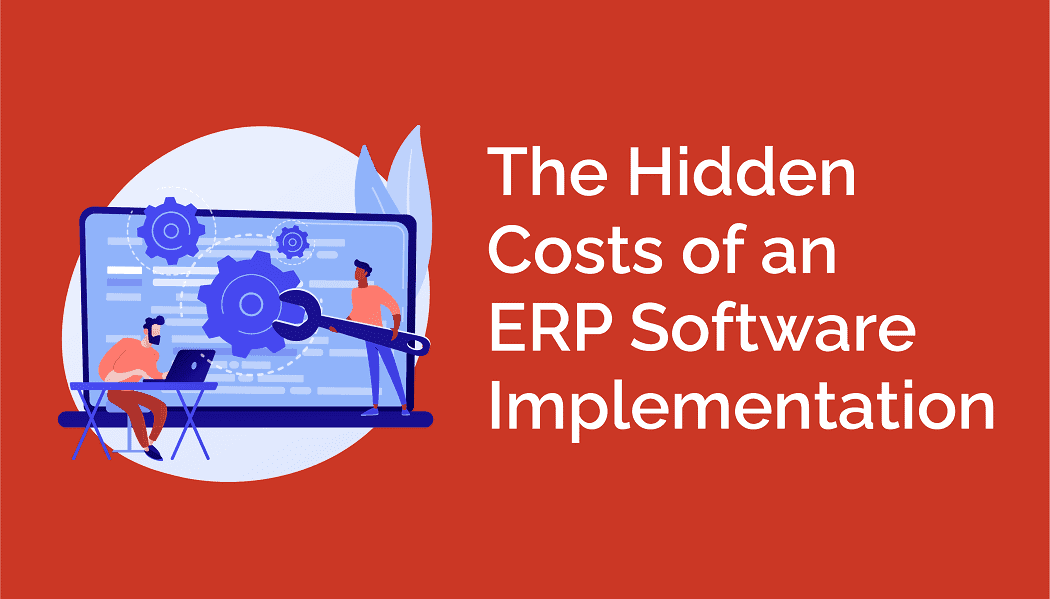Implementing Enterprise Resource Planning (ERP) software is a major decision for any business. While the anticipated benefits of ERP systems—such as improved efficiency, better data management, and streamlined processes—are well-documented, there are hidden costs associated with implementation that businesses often overlook. Understanding these hidden costs and taking proactive steps to mitigate them can save your organization significant amounts of time and money.
1. Training Costs
One of the most common hidden costs is training. Employees need to be adequately trained to use the new system effectively. This training can be expensive, especially if it involves hiring external consultants or dedicating internal resources to develop training materials and conduct sessions.
How to Avoid: Invest in comprehensive training programs early in the process and ensure that they are tailored to the needs of different user groups within your organization. Consider investing in ongoing training to help employees adapt to updates and changes in the ERP system.
2. Data Migration and Integration
Migrating data from legacy systems to a new ERP system can be complex and time-consuming. Issues often arise during this process, including data inaccuracies, compatibility problems, and the need for extensive data cleansing.
How to Avoid: Plan data migration carefully and conduct thorough testing before going live. Engage experienced consultants who can help with data integration and cleansing. It’s also beneficial to create a detailed data migration strategy that includes testing phases and fallback plans.
3. Customization Costs
While ERP systems come with standard functionalities, many organizations require customizations to meet their specific needs. Customizing the software can be costly, both in terms of initial setup and ongoing maintenance.
How to Avoid: Clearly define your requirements and evaluate whether the standard ERP functionalities meet your needs before opting for customizations. Work closely with ERP vendors to explore out-of-the-box solutions and consider phased implementation to reduce the need for extensive customizations.
4. Change Management
Implementing a new ERP system often requires significant changes to business processes and workflows. Managing these changes effectively is crucial, but it can also be a hidden cost if not handled properly. Resistance to change from employees can lead to delays and additional costs.
How to Avoid: Develop a robust change management plan that includes clear communication, stakeholder engagement, and support for employees throughout the transition. Foster a culture that embraces change and provides resources to help employees adapt.
5. Ongoing Support and Maintenance
After the initial implementation, ongoing support and maintenance of the ERP system can incur additional costs. These include system updates, bug fixes, and technical support.
How to Avoid: Negotiate a support and maintenance agreement with your ERP vendor that includes clear terms and conditions. Additionally, consider setting aside a budget for ongoing support and maintenance to avoid unexpected expenses.
6. Opportunity Costs
The implementation of an ERP system often requires a significant investment of time and resources, which can divert attention from other important projects and opportunities. The opportunity cost of not focusing on other business areas can be substantial.
How to Avoid: Carefully plan the ERP implementation timeline and allocate resources efficiently. Ensure that key business functions are not neglected during the implementation phase and consider ways to streamline other projects to mitigate opportunity costs.
7. Post-Implementation Adjustments
Even after the ERP system is live, there may be unforeseen issues that require adjustments or additional configurations. These post-implementation adjustments can add to the overall cost of the project.
How to Avoid: Allocate a portion of your budget for post-implementation support and be prepared for ongoing adjustments. Regularly review the system’s performance and user feedback to address any issues promptly.
8. Vendor Lock-In
Choosing an ERP vendor can sometimes lead to vendor lock-in, where the business becomes heavily dependent on a single vendor for updates, support, and customizations. This can limit flexibility and lead to higher costs over time.
How to Avoid: Consider the long-term implications of your ERP vendor choice. Ensure that the vendor offers flexible solutions and that you have clear terms regarding support and future upgrades. Evaluate the potential for future scalability and integration with other systems.
Conclusion
ERP implementation is a significant investment, and understanding the hidden costs can help you manage and mitigate them effectively. By planning thoroughly, investing in training, and maintaining clear communication, you can navigate the complexities of ERP implementation and maximize the return on your investment. Being proactive and prepared will help ensure a smoother transition and a more successful ERP deployment for your organization.
